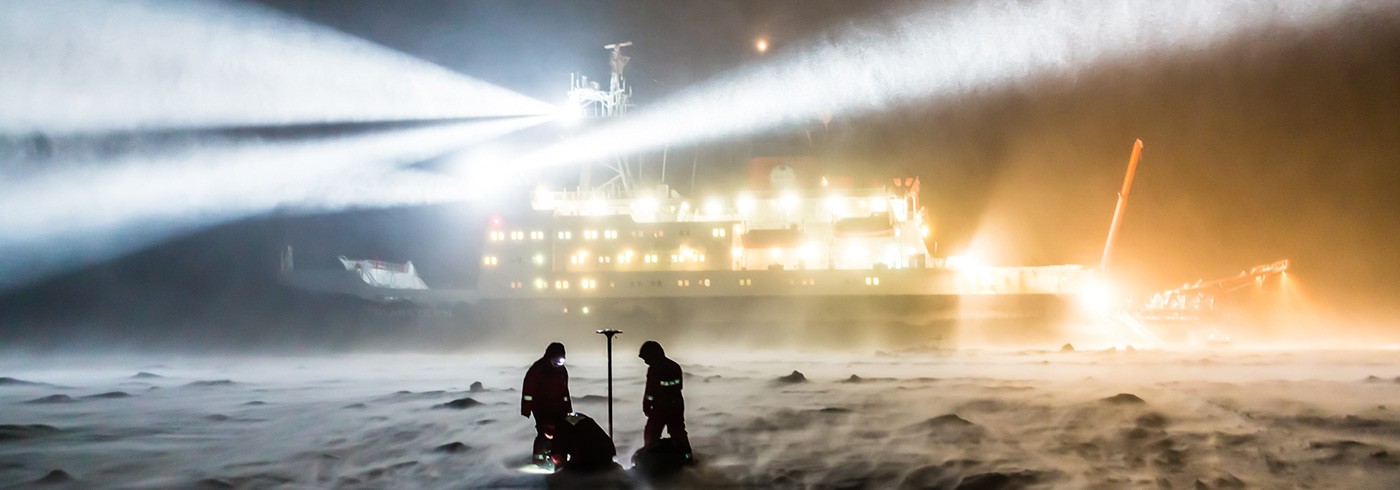Winter sea ice: The missing link in the biogeochemical cycle of organo-halogens in polar areas
6 June 2013 - 12 August 2013This project aims to understand how changes in global climate will affect the processes determining halocarbon production and cycling in polar areas and interactions at the snow-sea and ice-ocean-atmosphere interfaces.
We specifically studied the emissions of certain biologically produced trace gases, i.e., volatile halogenated organic compounds, halocarbons. Several of these compounds have been identified as ozone depleting and are subject to present and future regulation under international agreements, such as the Montreal Protocol.
The investigation commenced during Expedition ANT XXIX/6 aboard the R/V Polarstern to the Weddell Sea during the 2013 austral winter. To elucidate the importance of brominated and iodinated halocarbon in atmospheric halogen chemistry during the polar winter, the distribution of these compounds was measured in the sea ice, snow, surface water, and air. The distribution of halocarbons in the water column was studied with a special emphasis on halocarbon release from sediment. All determinations were performed on board using purge-and-trap pre-concentration techniques followed by gas chromatography. We also studied the processes governing mercury cycling in the air-sea ice-ocean system, and the associated fluxes during the Antarctic winter.
Halocarbons were found to be produced in sea ice and snow during the Antarctic winter at concentrations far exceeding those found in the summer. These extremely high levels were detected in brine, frost flowers, and at the snow-ice interface. The flux of brominated halocarbons was estimated to be approximately 100 times greater in winter than under summer conditions.
First-year ice was found to be an extraordinarily strong source of halocarbons. This finding is of particular importance in relation to changes in the Arctic, where multi-year ice is decreasing in favour of first-year ice.
On several occasions during the expedition, atmospheric mercury depletion events (AMDE’s) were monitored along the cruise track. After these events, elevated concentrations of mercury were found in the surface snow lawyer, probably due to AMDEs and subsequent deposition of oxidized mercury fractions.





